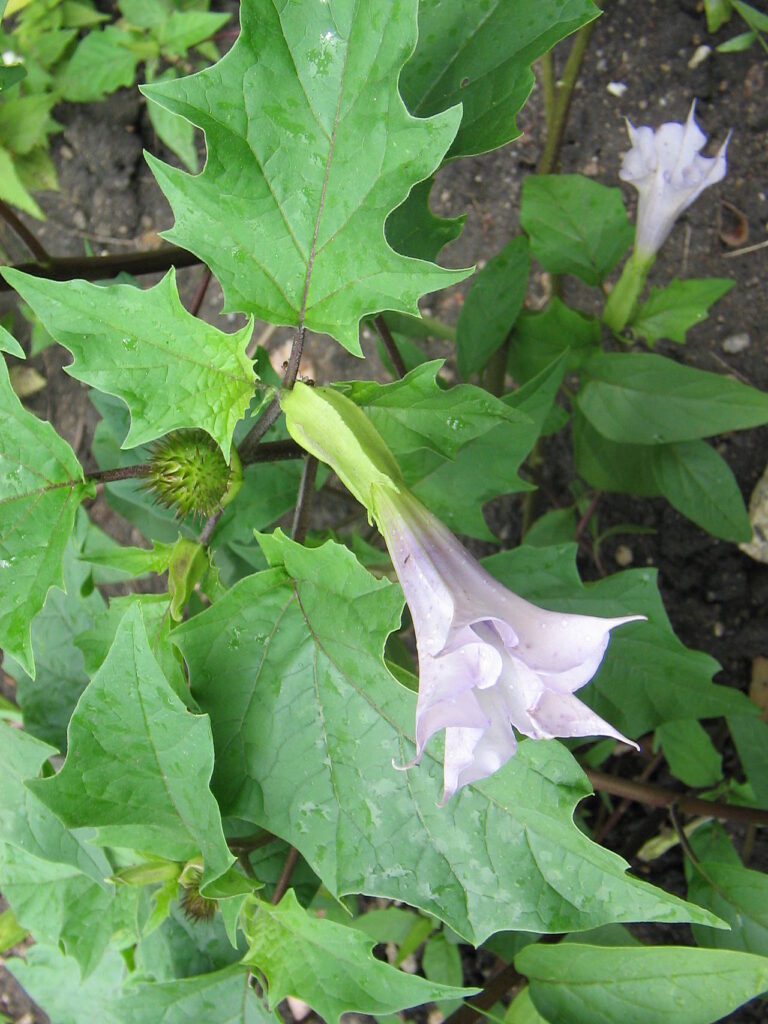Case Report:
Patient Profile:
A 13-year-old boy was brought to the emergency department by his parents with complaints of confusion, excessive talking, dry mouth, and dilated pupils. The symptoms started approximately 2 hours prior to presentation. According to the parents, the boy had been playing near a field and was later found chewing on seeds from a wild plant, later identified as Datura stramonium (Dhatura).

Clinical Findings:
- Vital Signs: Heart rate – 140 bpm; Blood pressure – 150/95 mmHg; Respiratory rate – 22/min; Temperature – 37.8°C
- Neurological: Disoriented to time and place, hallucinating, agitated, and restless.
- Ocular: Mydriasis (dilated pupils) unresponsive to light
- Skin: Flushed, dry, warm to the touch
- Oral cavity: Markedly dry mouth with difficulty speaking
Initial Management:
- Intravenous fluids were initiated.
- Activated charcoal was administered, as ingestion occurred within a 1-hour window.
- Continuous cardiac and neurological monitoring was started.
- Sedation with IV midazolam was given for agitation.
As symptoms progressed, the patient exhibited worsening delirium. Considering the severity, physostigmine (0.5 mg IV slowly) was administered under ECG monitoring. Within 30 minutes, the boy’s mental status significantly improved, and heart rate decreased to 110 bpm.
He remained under observation in the pediatric intensive care unit for 48 hours. By the third day, all symptoms had resolved, and he was discharged with no neurological deficits.
Introduction:
Datura stramonium, commonly known as Dhatura, is a toxic plant known for its strong anticholinergic alkaloids—atropine, scopolamine, and hyoscyamine. Though historically used in traditional remedies, its accidental ingestion, particularly by children, can lead to life-threatening toxicity.
Toxicology and Pathophysiology:
Dhatura contains potent anticholinergic compounds that inhibit muscarinic acetylcholine receptors. The toxic effects include:
- Central nervous system: Hallucinations, agitation, seizures, coma
- Peripheral: Dry mucous membranes, mydriasis, urinary retention, hyperthermia, tachycardia
Mnemonic: “Blind as a bat, hot as a hare, dry as a bone, red as a beet, mad as a hatter” describes the classical anticholinergic syndrome.
Diagnosis:
Diagnosis is primarily clinical, supported by:
- History of exposure
- Classic anticholinergic signs and symptoms
- Exclusion of other toxic or metabolic causes
Management:
- Stabilization: ABCs (Airway, Breathing, Circulation)
- Decontamination: Activated charcoal if early presentation
- Sedation: Benzodiazepines for agitation or seizures
- Antidote: Physostigmine is the antidote of choice in severe cases but must be used cautiously due to potential for bradyarrhythmias or seizures
- Monitoring: Continuous observation and supportive care, especially in pediatric patients
Discussion:
This case emphasizes the vulnerability of children to plant-based toxicities, especially in rural or semi-rural areas where toxic flora like Dhatura is accessible. The use of physostigmine, though reserved for moderate to severe cases, proved crucial in reversing life-threatening symptoms. Awareness and early recognition are essential to avoid complications.
Conclusion:
Dhatura poisoning remains a significant clinical entity in regions where the plant is common. The case of this 13-year-old boy illustrates the rapid onset and severity of symptoms and the importance of timely, appropriate medical intervention. Education and preventive strategies are key in reducing accidental ingestions, particularly among children.
